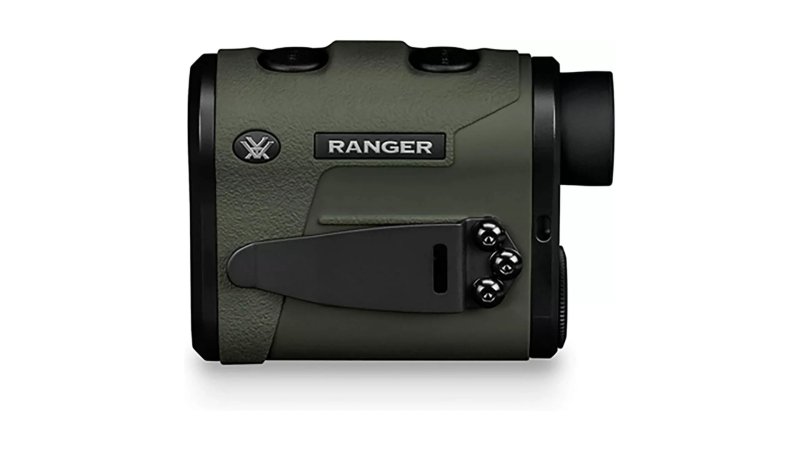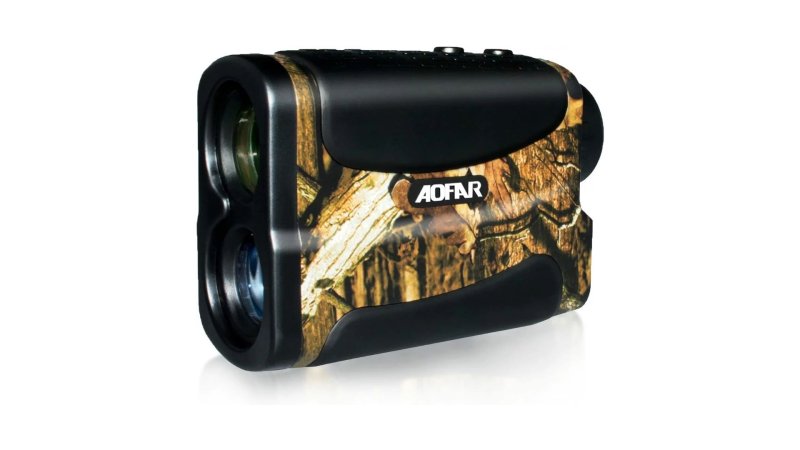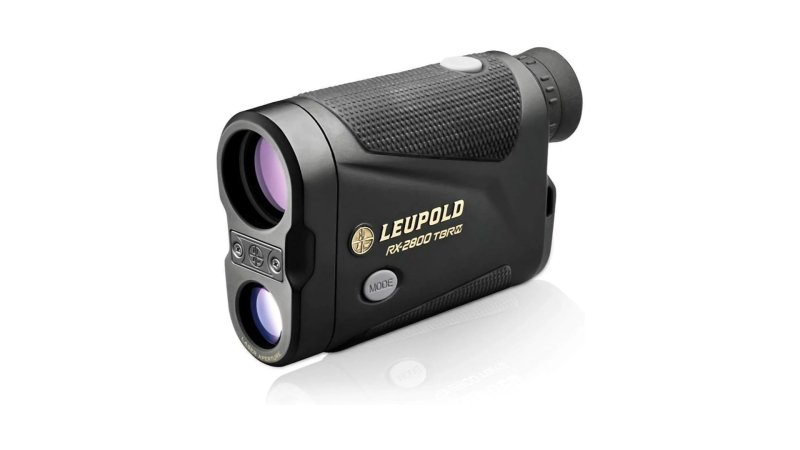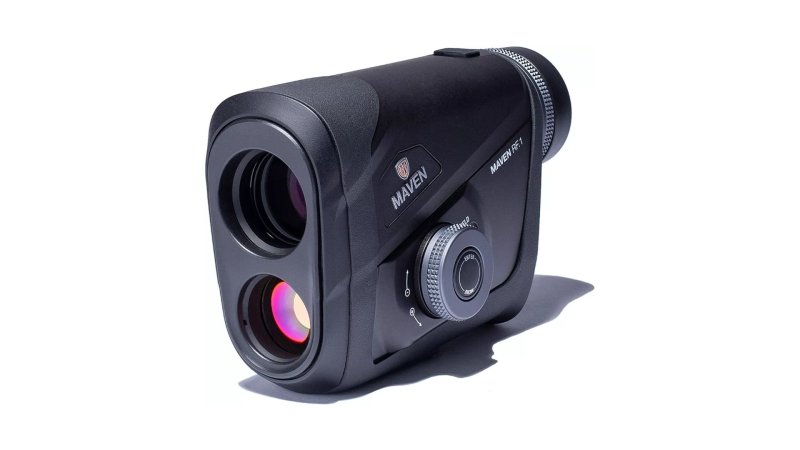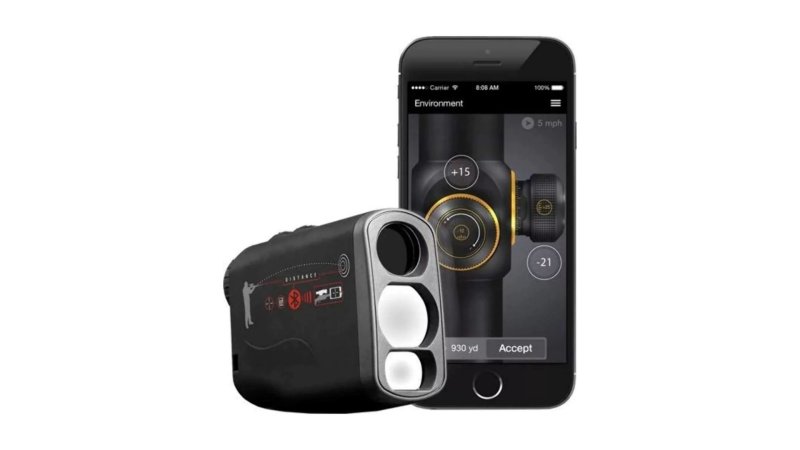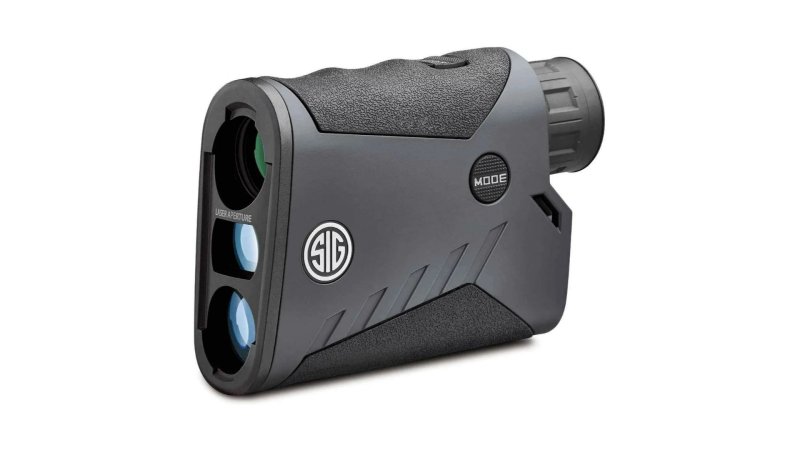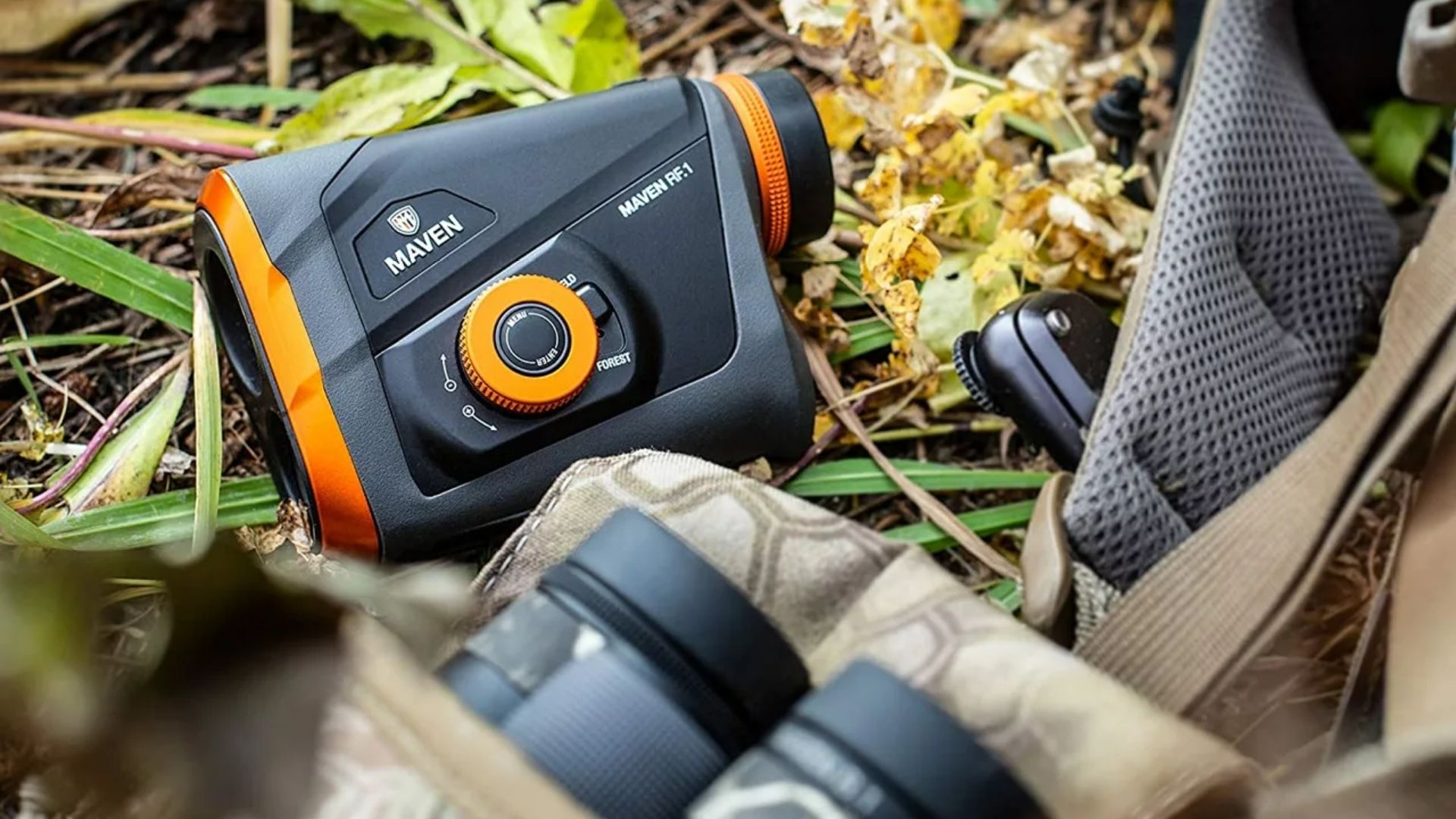

We may earn revenue from the products available on this page and participate in affiliate programs.
The ideal rangefinders for hunting aren’t always the most expensive rangefinders, as one might expect. “Hunting” is a rather ambiguous term, the practice of which can vary widely depending on a hunter’s chosen game, geographical location, and tool of choice (rifle, bow, bazooka, etc). There’s a wide variety of hunting rangefinders on the market, with an even wider array of capabilities, and it’s important to understand which functions you will need for your specific style of hunting. Understanding this could be the difference between spending $100 on a hunting rangefinder and dropping $500 or more.
Not to get preachy or anything, but to me, ethical hunting is something all hunters should strive to practice. For those unfamiliar with the term, ethical hunting simply means that the hunter strives to harvest their quarry in the quickest and most efficient way possible, causing the least amount of pain for their prey. In this day and age, and especially for those of us not blessed with the wisdom of age and extensive experience, technology like hunting rangefinders can aid a hunter in taking high probability, ethical shots that will kill animals quickly and minimize the risk of merely wounding the animal, leading to undue suffering.
In the sections below, we will explore our picks for the best rangefinders for hunting, their key attributes, downfalls, and what type of hunting they suit best.
- Best Overall: Vortex Optics Ranger 1800
- Best Value: AOFAR HX-700N
- Editor’s Choice: Leupold RX-2800 TBR Laser Rangefinder
- Best for Long Range Shooting: Maven RF.1 Rangefinder
- Best with Bluetooth: ATN Laser Ballistics 1500
- Best Under $250: SIG Sauer Kilo1000BDX
Methodology
Researching rangefinders for hunting was a pretty extensive process, with a lot of fun and interesting rabbit holes to stumble into along the way. Like binoculars, rangefinders can be pretty complicated in their construction alone, having to take into account such aspects as glass quality, glass coatings, magnification powers, objective lens size, housing-case material, and water- and fog-proofing. Fortunately, a lot of this knowledge had already been gathered while researching our binocular recommendations a few months back.
The real complications come in the features that set rangefinders apart, which are all the electronic gadgetry shooting honest-to-god laser beams, collecting laser beams, and translating laser beams into useful ballistics information. Being a bowhunter, who usually hunts from a treestand in a wooded area with a max shot range of 40 yards, I’ve never really had much need for ballistics calculations. Fortunately, there are plenty of websites out there that can teach you everything you need to know to make a sound rangefinder pick, such as this informative article from Bushnell.
Armed with my new knowledge, I scoured other top rangefinder lists and product reviews, while pitting them against the recommendations of fellow hunters in my life. What I’ve produced is a list I’m confident will help you make a smart decision on the best hunting rangefinder to meet your needs.
Best Overall
Vortex Optics Ranger 1800
Pros
- Calculates Angle Range Compensation
- Scan mode for moving targets
- Three brightness modes
- Waterproof
Cons
- 1,800 yards may not be long enough for some ambitious shooters
- A bit pricey
Product Specs
- Max range: 1,800 yards
- Magnification/objective lens: 6x22mm
- Accuracy: +/- 3 yards @ 1,000 yards
Best Value
AOFAR HX-700N
Pros
- Accurate, high-speed range readings
- Scan mode for moving targets
- Affordable
Cons
- May not be a long enough range for some hunters
- Doesn’t offer different modes of range computation
Product Specs
- Max range: 700 yards
- Magnification/objective lens: 6x25mm
- Accuracy: +/- 1 yard @ 700 yards
Editor’s Choice
Leupold RX-2800 TBR Laser Rangefinder
Pros
- True Ballistic Range/Wind technology (can tailor to munition type)
- Scan mode
- Three reticle options
- Waterproof/fog-proof
Cons
- Might be a bit overkill for bow hunters
Product Specs
- Max range: 2,800 yards
- Magnification/objective lens: 7x27mm
- Accuracy: +/- .5 yards @ 2,800 yards
Best for Long Range Shooting
Maven RF.1 Rangefinder
Pros
- Calculates Angle Range Compensation u0026 Line Of Sight
- Field u0026 Forrest Modes for filtering obstructions
- Five brightness modes
- Lifetime warranty
Cons
- May not be worth the price for hunters not looking to take long shots
Product Specs
- Max range: 4,500 yards
- Magnification/objective lens: 7x25mm
- Accuracy: +/- 3 yards @ 2,000 to 4,500 yards
Best with Bluetooth
ATN Laser Ballistics 1500
Pros
- Syncs with ATN Smart HD Scope
- App compatible to both
- Android u0026 IOS systems
- Two-year warranty
- Waterproof
Cons
- May be cumbersome to deal with a rangefinder, phone, and rifle while hunting
- Unnecessary for bow hunters
- More tech, more to go wrong
Product Specs
- Max range: 1,500 yards
- Magnification/objective lens: 6x / not specified
- Accuracy: +/- 1 yard @ 1,500 yards
Best Under $250
SIG Sauer Kilo1000BDX
Pros
- Affordable
- Bluetooth-compatible with SIG Sauer scope
- Applied Ballistics Ultralight mode for tailored ballistics calculations
- HyperScan and RangeLock functions
Cons
- Range may not be as long as some rifle hunters would like
Product Specs
- Max range: 1,200 yards
- Magnification/objective lens: 5x20mm
- Accuracy: Unspecified
Our verdict on rangefinders for hunting
The six rangefinders I’ve listed are obviously not the only rangefinders on the market with comparable functionality, but based on my research, rangefinders like the Vortex Ranger 1800 and the AOFAR HX-700N will get you the most bang for your buck (or doe). If you think I’ve overlooked a rangefinder model or you have additional feedback on any of the models I’ve selected, I’d love to hear about it in the comments section below.
What to consider when buying rangefinders for hunting
The most important thing to consider when you’re shopping for a rangefinder is what kind of capabilities you expect to need. If the extent of your use will be ranging from a treestand while bowhunting, you probably don’t need to spend money on anything super fancy, but if you’re planning to stalk an elk and take long-range rifle shots up some distant mountain slope, you may want to invest a little more.
Types of rangefinders for hunting
Basic models
Basic model rangefinders typically come with limited mode options. These rangefinders may be hit or miss when it comes to offering angle range compensation, so you’ll want to do your research before you make your purchase. In any case, these rangefinders will usually allow you to switch between yards and meters, give you an angle reading, and have a speed setting for ranging things on the move. Typically, as the price goes up, the more functionality you’ll get. This pricing correlation also applies to the durability of the device (lens glass and picture quality also usually improve with price as well).
Ballistic models
Rangefinders in this category will have built-in software that can offer a hunter a ballistics solution along with their range readings. The hunter is able to tailor their rangefinder to their specific needs, entering things like environmental data and cartridge information. What results is specific recommendations for sight adjustments based on all gathered data.
Bluetooth-capable
A few rangefinders on the market can now use Bluetooth capabilities to sync with either a
“smart scope” of the same brand or a cell phone app. Range, environment, and ballistics information is relayed to the connected device which then either syncs accordingly or offers adjustment solutions for the best possible shot.
Binocular rangefinders
Some binoculars have rangefinders built right into them. If you’re looking to cut down on the number of items you need to keep track of in the field, a binocular/rangefinder combo might be the way to go. Keep in mind, though, that these binoculars are often much heavier and harder to operate with only one hand like a traditional rangefinder.
Key features for rangefinders for hunting
Angle range compensation
Angle range compensation is your rangefinder’s ability to take a “line of sight” reading and calculate only the horizontal distance to the target. This is an important feature to have if you anticipate that you will be firing from either above or beneath your target at any significant angle. When you’re adjusting your sights, you want to only account for horizontal distance to the target. For a more detailed explanation, check out this article or consult your local physicist.
Magnification
A rangefinder is all well and good, but if it doesn’t have enough magnification power, you may not be able to get the reticle fixed in the right spot, resulting in a bad read. Most of the rangefinders on our list range from 5x to 7x magnification. When you get into the higher magnification, it becomes more difficult to hold the rangefinder on target to get a proper read, so you may want to consider utilizing a tripod or bracing the rangefinder against a tree or other fixed object.
Lens coating
Like binoculars, the quality of a rangefinder is often determined by the quality of the glass used in its lenses. This is, after all, an optical device, so it would make sense to buy a range finder that gives you the highest-quality picture possible. Most rangefinder manufacturers use identical glass coatings to what is used in binoculars, to maximize light transmission, reduce glare, prevent scratching or chipping, and give the user the best possible experience.
Rangefinders for hunting pricing
In general, if you’re a bowhunter and you hunt from a static location, you can get by pretty cheap when it comes to rangefinders. A decent bare-bone rangefinder is going to run you between $50 and $150 and should give you the distance readings you need for an effective hunt. As the price increases, so does the software capabilities and the strength of the rangefinder’s build.
As you start to get up over $150, you see the ranging capacity increase along with the quality of the lens glass and coatings. This is where you also start to see multiple modes of distance calculation, with most offering Angle Compensated Ranges and Line Of Sight Ranges modes.
At $250 and up, the software of the rangefinders only gets more sophisticated. A lot of them offer individualized setups to give you ballistics reading tailored to your specific setup and needs.
FAQs about rangefinders for hunting
You’ve got questions, Task & Purpose has answers.
Q: What is the easiest rangefinder to use?
A: The AOFAR HX-700N is probably the easiest rangefinder to use, simply because it has the fewest fancy features. That being said, many rangefinder manufacturers have put a lot of time and effort into simplifying their user interface to lower the chances of complications in the field.
Q: Do you need a slope on a rangefinder?
A: It depends on your terrain. If you plan to hunt from an elevated position or you’re roving through mountainous terrain, you’ll probably want to have a rangefinder that accounts for slope and calculates your distance using Angle Compensation.
Q: How long do laser rangefinders last?
A: Like anything, the better you care for it, the longer it will last. That said, when I asked Google this same question, the most common answer was about five years, but this probably has a lot to do with the frequency of use as well.
Q: How do you bow hunt without a rangefinder?
A: Some bowhunters, especially treestand hunters, circumvent the need for rangefinders by pre-marking range distances within their field of fire. This can be done by measuring the distance from the base of your tree to prominent features (like trees, rocks, fences, etc.) in the surrounding area. Having these known distances to key features can help a bowhunter estimate their target’s distance by means of comparison.
